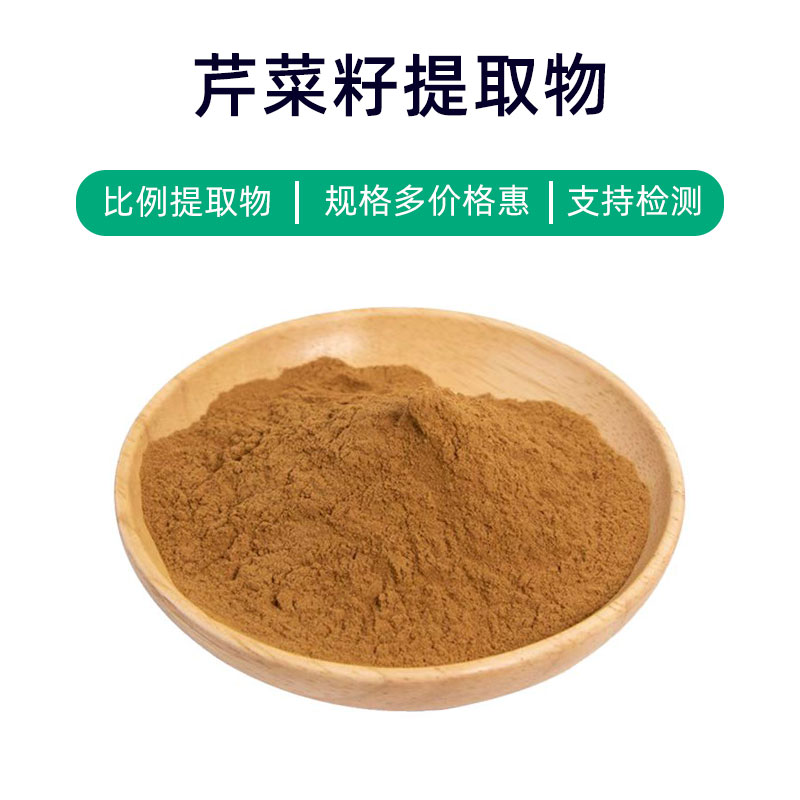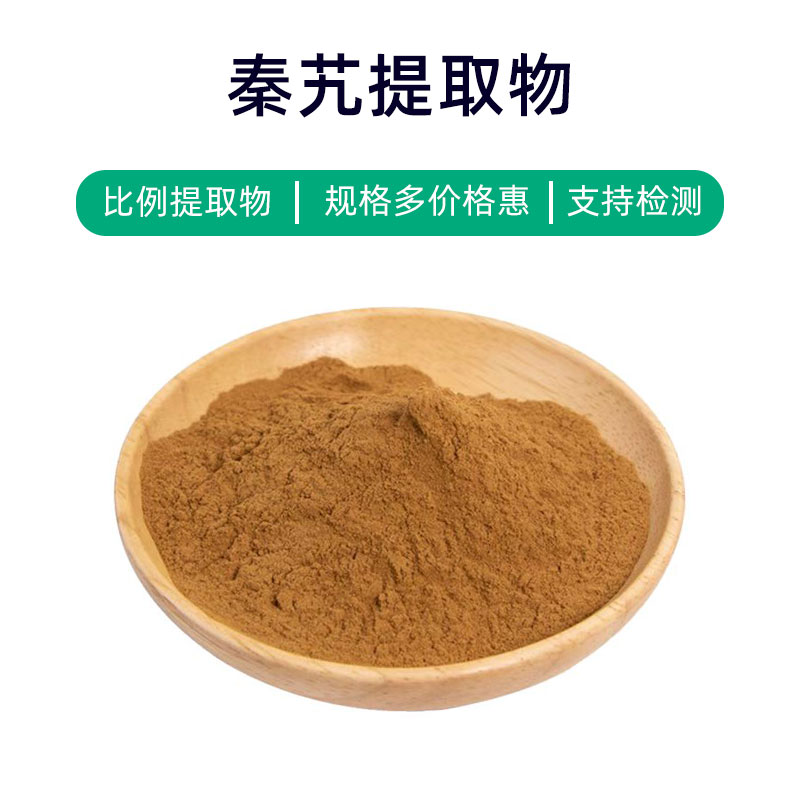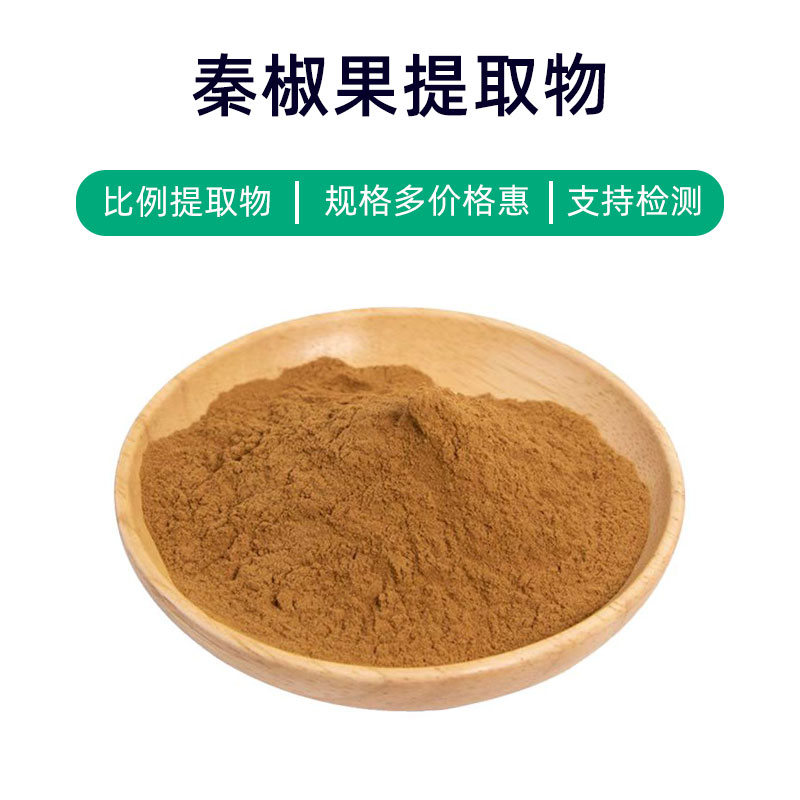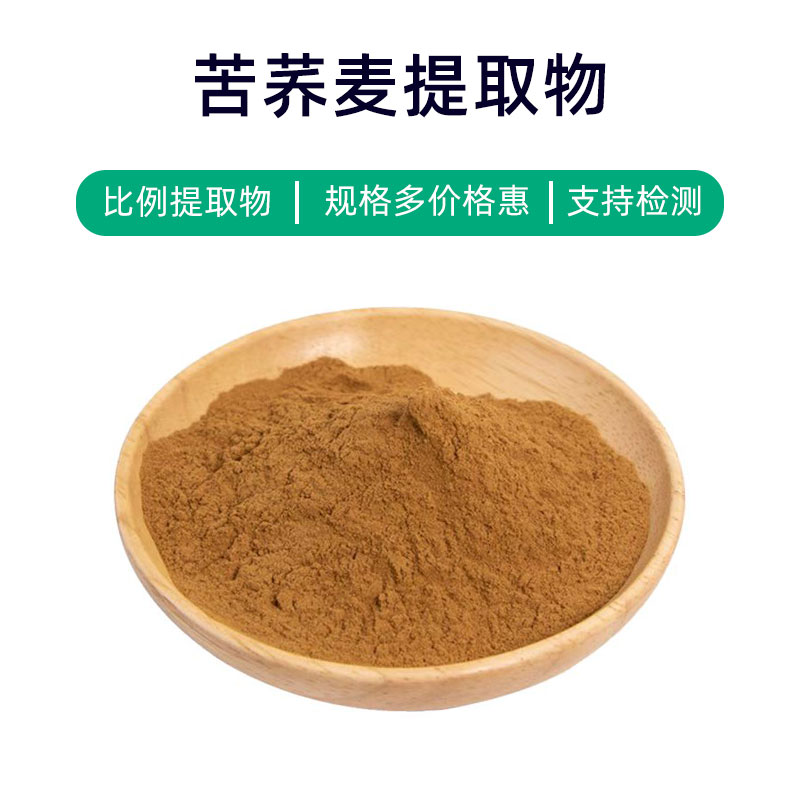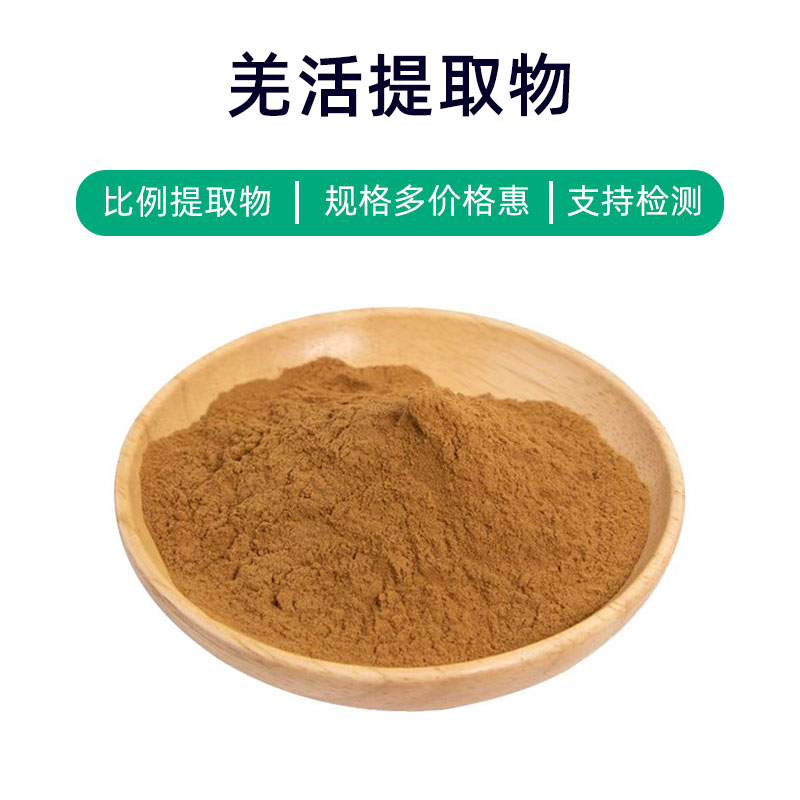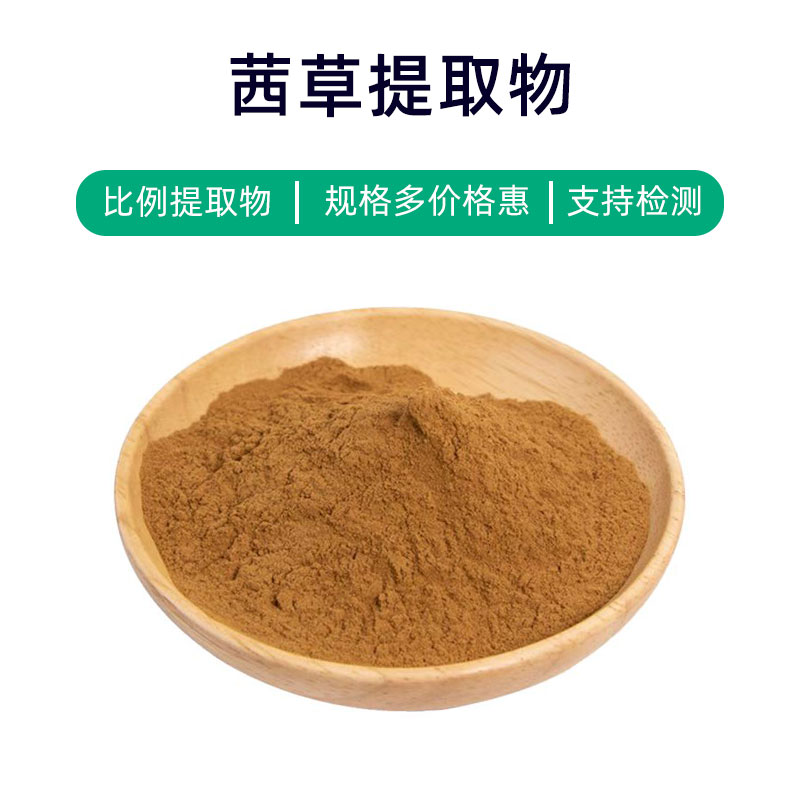Buckwheat - Golden Buckwheat Extract Product Introduction
Buckwheat extract is a natural plant extract derived from golden buckwheat seeds, with main components including flavonoids (like quercetin and rutin), proteins, and vitamins. These components provide various benefits and applications.
Firstly, buckwheat extract boasts excellent antioxidant properties that can neutralize free radicals, slow down the aging process, and protect the skin from environmental pollution and UV radiation, helping to maintain youthful and healthy skin.
Secondly, this extract has anti-inflammatory and antibacterial properties which can alleviate skin inflammation, redness, and acne, promoting skin repair and healing, making it suitable for treating sensitive skin and acne-related issues.
Additionally, buckwheat extract exhibits skin-brightening and spot-lightening effects by inhibiting melanin production, reducing pigment deposition, evening out skin tone, and enhancing skin brightness.
In terms of application, buckwheat extract is widely used in skincare products, beauty products, and supplements, such as creams, serums, masks, and cleansers. It can serve as a primary active ingredient in various cosmetic formulations, enhancing product efficacy and quality.
In summary, buckwheat extract is a multifunctional natural plant extract with antioxidant, anti-inflammatory, and brightening properties, extensively utilized in skincare and beauty products, providing comprehensive protection and care for the skin.
Buckwheat - Golden Buckwheat Extract Production Process
The production process of buckwheat extract primarily includes the following steps:
- Raw Material Preparation: Select high-quality golden buckwheat seeds, clean, and screen them to ensure material quality.
- Soaking and Extracting: Place the cleaned seeds into extraction equipment and use an appropriate solvent (such as water or ethanol) for soaking. The extraction time and temperature are determined based on actual conditions to extract the target components.
- Filtration: Filter the soaking solution through a mesh or filter paper to remove solid impurities, obtaining the extract.
- Concentration: Concentrate the extract, typically using evaporation or reduced pressure concentration methods, to remove the solvent and concentrate the extract.
- Precipitation: Under appropriate temperature and pH conditions, control the solution's concentration or add suitable precipitating agents to precipitate the target components.
- Separation: Separate the precipitate from the solution, usually using centrifugation or filtration methods to isolate the precipitate.
- Drying: Dry the separated precipitate using methods such as spray drying or vacuum drying to obtain the final extract powder.
- Milling: Grind the dried extract powder to ensure uniform particle size, facilitating subsequent packaging and use.
- Quality Control: Conduct quality testing and analysis on the extract, including measuring target component content, microbial limits, and heavy metal content to ensure compliance with relevant quality standards and regulations.
- Packaging: Package the quality-assured extract powder, typically using sealed or canned packaging to prevent moisture, contamination, and oxidation.
The above is a typical production process for buckwheat extract, with each step requiring strict control of conditions and operations to ensure product quality and stability.
Buckwheat - Golden Buckwheat Extract Effects and Side Effects
Buckwheat extract has multiple effects and benefits, primarily including the following aspects:
- Antioxidant Effect: Buckwheat extract is rich in flavonoids such as quercetin and rutin, providing significant antioxidant effects to eliminate free radicals, slow cellular aging, and protect cells from oxidative damage.
- Blood Sugar Reduction: The extract contains abundant flavonoids that can enhance insulin sensitivity and promote glucose utilization, aiding in blood sugar regulation, with certain supportive effects for diabetes patients.
- Blood Lipid Reduction: The flavonoids in buckwheat extract can inhibit cholesterol synthesis and promote its metabolism, lowering serum total cholesterol, triglyceride, and low-density lipoprotein cholesterol levels, thereby preventing and treating hyperlipemia.
- Anti-inflammatory Effect: Flavonoids in the extract have anti-inflammatory properties, capable of inhibiting the release of inflammatory mediators and alleviating inflammatory responses, thus offering relief for conditions such as rheumatoid arthritis and intestinal inflammation.
- Circulation Improvement: Ingredients like anthocyanins in buckwheat extract can enhance blood vessel elasticity, improve blood flow, and promote microcirculation, contributing to cardiovascular health.
- Anti-allergic Properties: The flavonoids in the extract exhibit anti-allergic properties that can inhibit allergic reactions and alleviate symptoms of allergic diseases such as rhinitis and asthma.
- Liver Protection: The flavonoids in the extract are known to protect the liver, reducing liver damage and promoting the repair and regeneration of liver cells.
While buckwheat extract offers numerous benefits, individual differences and dosage control should be considered during use. Long-term or excessive use may lead to adverse reactions such as digestive discomfort or allergic reactions. Therefore, it is advisable to consult a physician or professional before use and strictly follow the usage instructions on the product label.
Buckwheat - Golden Buckwheat Extract Application Scenarios and Dosage
Buckwheat extract is widely applied in the fields of medicine, food, and cosmetics. Below are its application scenarios and recommended dosages in each area:
- Medical Field:
- Application Scenario: Used to treat hypertension, hyperlipidemia, hyperglycemia, and other cardiovascular diseases, regulate blood sugar and lipids, lower cholesterol, and prevent atherosclerosis.
- Dosage: Typically taken orally; dosage forms include capsules and tablets. The usual dose for adults is 300-600 mg per time, 2-3 times daily, taken either before or after meals.
- Food Field:
- Application Scenario: Used in the production of flour, noodles, cookies, and other foods to enhance nutritional value and functionality.
- Dosage: Depending on actual needs, the addition proportion in flour is typically 5% to 20%, adjustable based on product formula and desired taste.
- Cosmetic Field:
- Application Scenario: Used in manufacturing skincare and beauty products, providing antioxidant, moisturizing, and anti-aging benefits.
- Dosage: Commonly as an ingredient in skincare products, added to creams, serums, and masks with a typical ratio of 0.5% to 5%, adjustable according to product formulation and performance needs.
- Other Fields:
- Application Scenario: Used in the production of health supplements and food-derived medicinal products to meet health needs.
- Dosage: Generally follows the application and dosage guidelines used in the medical or food sectors, adjusted reasonably based on product formulation and benefits.
It is important to note that the dosage and usage of buckwheat extract may vary depending on its intended use. Consultation with a physician or professional is recommended before use, adhering strictly to the specifications outlined in the product instructions. Additionally, individuals allergic to buckwheat or with related contraindications should avoid use to prevent adverse reactions.
Buckwheat - Golden Buckwheat Extract Source Plant Introduction, Distribution and Growing Environment
Buckwheat (scientific name: Fagopyrum esculentum Moench), also known as golden buckwheat, is an important grain crop and medicinal plant belonging to the Polygonaceae family. The following is a description of its source plant, distribution, and growing environment.
- Source Plant Characteristics:
- Buckwheat is an annual herb with a developed root system, erect stems, and a height of approximately 30-100 centimeters.
- Its leaves are triangular or heart-shaped, with long petioles and triangular spots on the leaf surface, which is smooth with a hairy underside.
- The flowers are small and white, clustered into a conical inflorescence, blooming in summer, and are an important source of nectar.
- The fruit is a triangular nut, appearing in a triangular or nearly round shape, maturing to a yellow-brown color.
- Distribution Range:
- Buckwheat originated in Southwestern China and is now widely distributed across the globe, including regions in Asia, Europe, North America, and South America.
- In China, it is primarily found in the Yangtze River basin, the Yellow River basin, and Northeastern regions, with cultivation at varying altitudes.
- Growing Environment Requirements:
- Buckwheat is adaptable with a wide temperature range for growth. The optimal growth temperature is between 10-25 degrees Celsius, displaying strong tolerance to both low and high temperatures.
- It prefers moist, well-drained soil, with relatively low demands on soil quality but is sensitive to soil pH, thriving in a pH range of 5.5-7.0.
- Buckwheat requires ample sunlight, as sufficient light promotes higher yield and quality.
As an important grain crop, buckwheat has widespread applications in the food sector and boasts rich medicinal value. Its cultivation and utilization methods vary across different regions, providing numerous benefits to people's lives and health.
Buckwheat - Golden Buckwheat Extract Processing and Storage
The processing and storage of buckwheat extract are critical steps in ensuring product quality and maintaining nutritional value.
- Processing Steps:
- First, the harvested buckwheat grains are cleaned and shelled to remove impurities.
- Next, the shelled buckwheat grains are ground or soaked to extract effective components.
- The extracted buckwheat extract can be processed through concentration, filtration, drying, and other steps to produce the final product.
- Storage:
- Buckwheat extract should be stored in a dry, cool, and well-ventilated environment, avoiding direct sunlight and humidity.
- The extract can be placed in sealed containers to prevent moisture or contamination from external odors.
- Regularly check the appearance and smell of the buckwheat extract during storage to ensure its quality and safety.
- For long-term storage, consider freezing or vacuum packaging in a low-temperature environment to extend shelf life.
Through scientific processing techniques and appropriate storage methods, the nutritional and active components of buckwheat extract can be effectively preserved, ensuring product quality and safety.
Monica Sun is a seasoned expert in the plant extraction industry with over a decade of experience in research and production. She specializes in the extraction and purification of plant active ingredients, focusing on driving innovation in natural product applications. Monica has participated in the development of multiple functional plant extracts, delivering high-value natural raw material solutions for the health food, pharmaceutical, and dietary supplement sectors.









